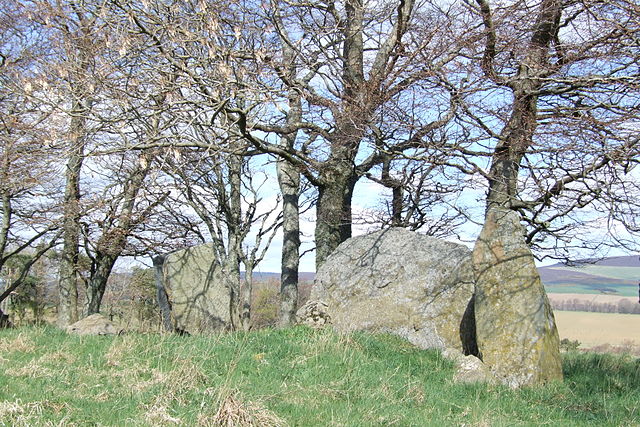The Rollright Stones are a complex of three Neolithic and Bronze Age megalithic monuments near the village of Long Compton, on the borders of Oxfordshire and Warwickshire. Constructed from local oolitic limestone, the three monuments, now known as the King's Men and the Whispering Knights in Oxfordshire and the King Stone in Warwickshire, are distinct in their design and purpose. They were built at different periods in late prehistory. During the period when the three monuments were erected, there was a continuous tradition of ritual behaviour on sacred ground, from the 4th to the 2nd millennium BCE.
Part of the King's Men stone circle, one of three monuments at the site
The Rollright Stones in 1645, with the King's Men in the middle, the Whispering Knights at the bottom right, and the King Stone at the middle right
The Whispering Knights, 2011.
The King's Men circle in 2011
A stone circle is a ring of standing stones. Most are found in Northwestern Europe – especially in Britain, Ireland, and Brittany – and typically date from the Late Neolithic and Early Bronze Age, with most being built from 3000 BC. The best known examples include those at the henge monument at Avebury, the Rollright Stones, and elements within the ring of standing stones at Stonehenge. Scattered examples exist from other parts of Europe. Later, during the Iron Age, stone circles were built in southern Scandinavia.
Swinside stone circle, Cumbria, England
Bryn Cader Faner, North Wales
Easter Aquhorthies recumbent stone circle near Inverurie, Aberdeenshire, Scotland
Dunnideer recumbent stone circle near Insch, Aberdeenshire, Scotland








